Kinesio Taping
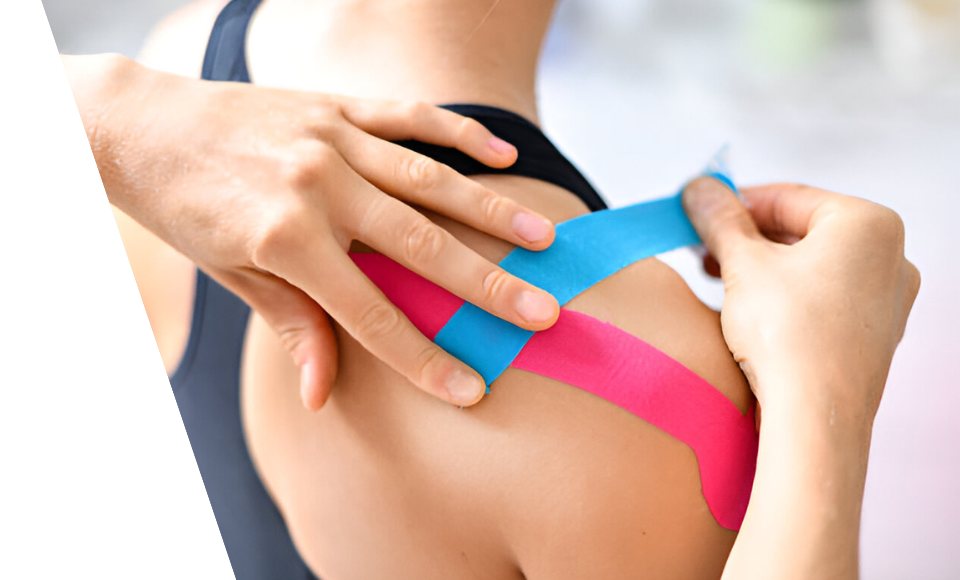
Kinesio Taping

Have you ever seen athletes wearing colorful strips of tape on their bodies? That’s not just for show – it’s a powerful technique called Kinesio taping. This special tape can help reduce pain, support muscles, and even improve how you move. Let’s unravel the mystery of Kinesio taping and see how it might help you feel better and move more freely.
What is Kinesio Taping?
Kinesio taping uses a special elastic tape that sticks to your skin. Unlike regular athletic tape that limits movement, Kinesio tape is designed to support your body while still allowing you to move naturally. It’s like giving your muscles and joints a helpful buddy to lean on.
How Does Kinesio Taping Work?
The tape works in several ways:
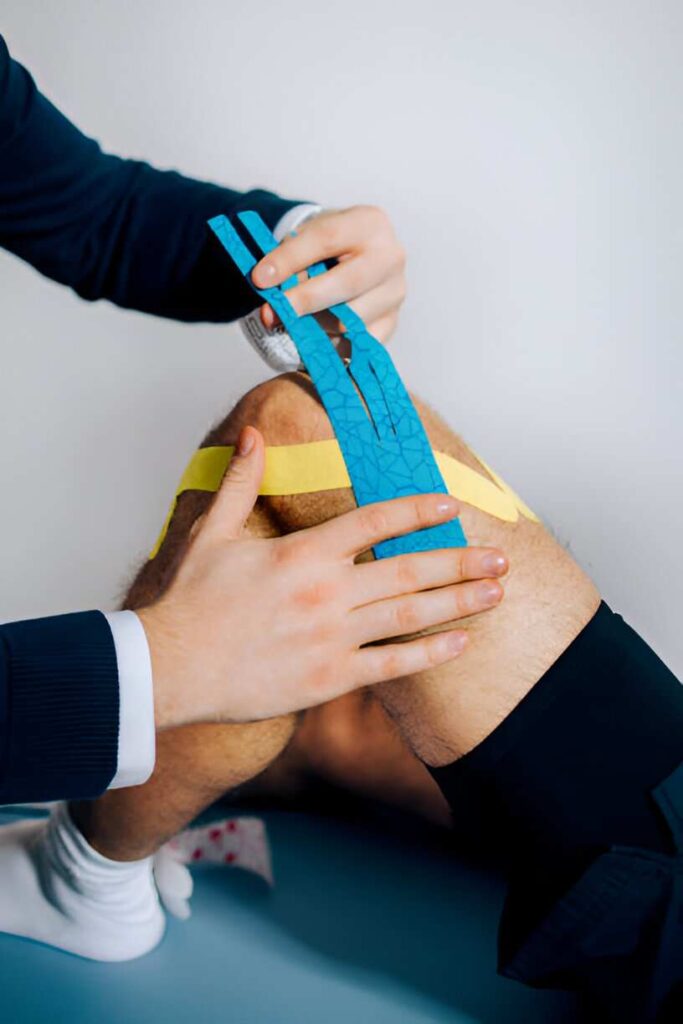
Kinesio Taping Uses
It’s not just for athletes – anyone dealing with pain or movement problems might benefit from Kinesio taping. Kinesio tape can help with many issues:
Muscle strains and sprains
Swelling and bruising
Poor posture
Kinesio Taping Uses
Kinesio tape can help with many issues:
– Muscle strains and sprains
– Joint pain
– Swelling and bruising
– Poor posture
– Sports injuries
– Knee, shoulder, or back pain
It’s not just for athletes – anyone dealing with pain or movement problems might benefit from Kinesio taping.
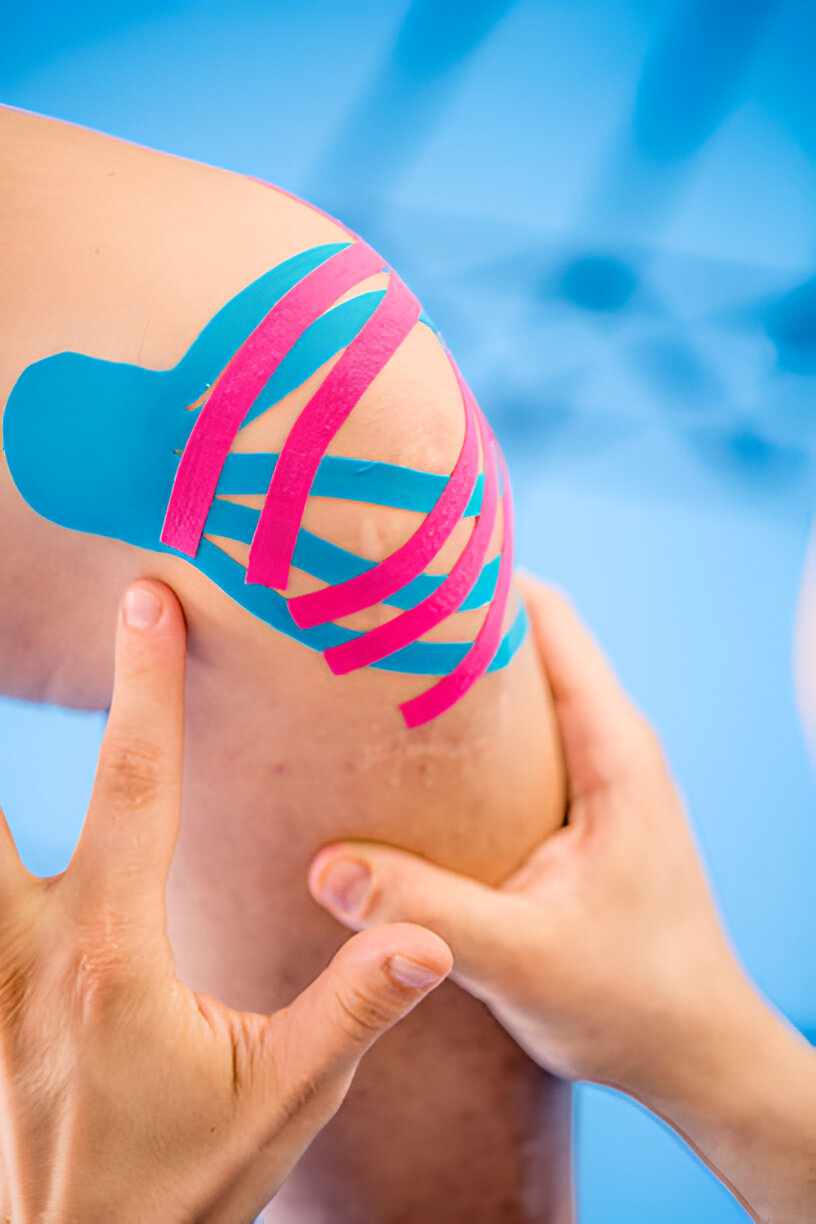
Benefits of Kinesio Taping
People who use Kinesio tape often experience:
– Reduced pain and discomfort
– Better support for weak or injured areas
– Improved movement and flexibility
– Faster recovery from injuries
– Decreased swelling
– Enhanced athletic performance
What to Expect in a Kinesio Taping Session
When you come to SwaHealth for Kinesio taping, here’s what will happen:
- Assessment: Your therapist will check your movement and ask about your pain.
- Skin prep: The area will be cleaned and, if needed, hair might be trimmed.
- Measuring: The therapist will measure and cut the tape to fit your body.
- Application: The tape is carefully applied using specific techniques.
- Instructions: You’ll learn how long to wear the tape and how to care for it.
Is Kinesio Taping Right for You?
Kinesio taping can help many people, but it’s not for everyone. It’s best to avoid if you have:
– Fragile or damaged skin
– Open wounds
– Certain skin conditions
– Allergies to adhesives
Always inform your therapist of any health condition you may have.
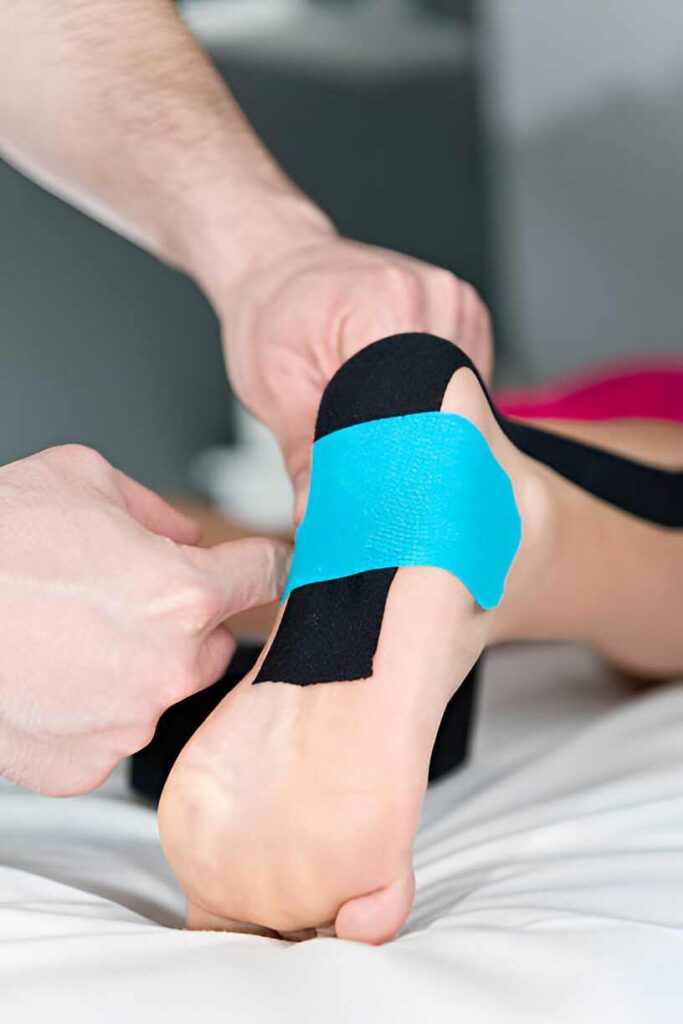
Tips for Getting the Most from Kinesio Taping
To make your Kinesio taping experience successful:
- Keep the tape dry for an hour after application.
- Avoid scratching or picking at the tape.
- Remove the tape if you experience irritation or itching.
- Follow your therapist’s instructions on how long to wear the tape.
- Be patient – it might take a few applications to see full benefits.
Kinesio Taping vs. Regular Athletic Tape
Kinesio tape is different from regular athletic tape:
– It’s more flexible, allowing for better movement.
– It can be worn for several days, even during showers.
– It doesn’t compress your body like regular tape.
– It’s designed to work with your body’s natural healing process.
Combining Kinesio Taping with Other Therapies
At SwaHealth, we often use Kinesio taping as part of a broader treatment plan. It can work well alongside:
– Physical therapy exercises
– Manual therapy techniques
– Heat or cold therapy
– Stretching routines
Your therapist will create a personalized plan that might include Kinesio taping along with other treatments to help you feel your best.
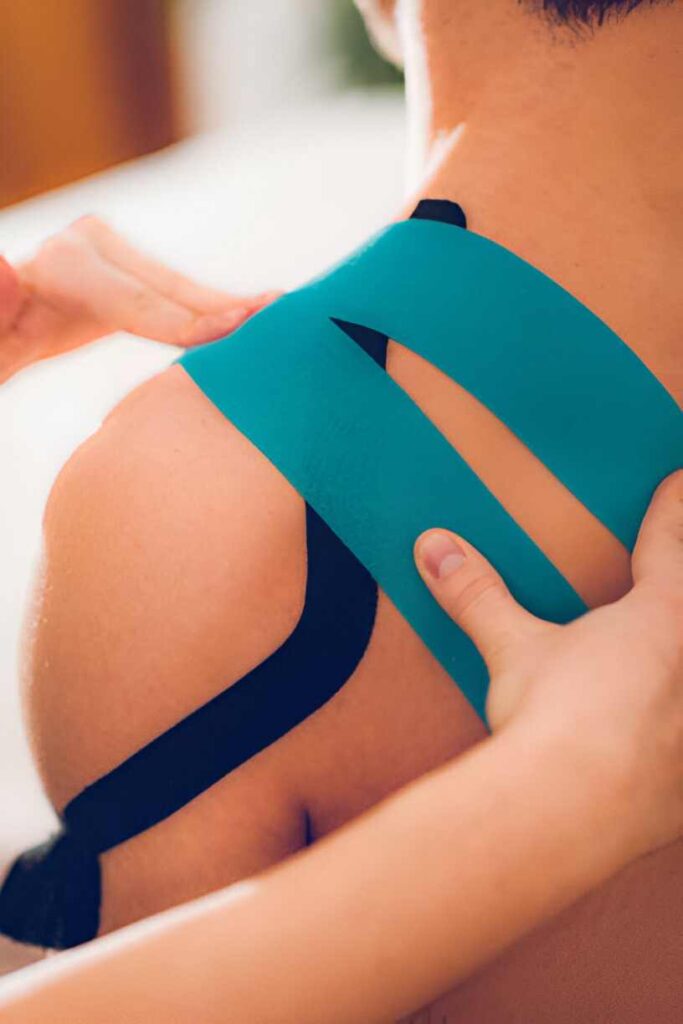
Kinesio Taping at SwaHealth: Supporting Your Path to Wellness
At SwaHealth, our skilled therapists are experts in Kinesio taping techniques. We use this innovative therapy to help people of all ages and activity levels move better and feel better. Whether you’re an athlete looking to enhance performance, someone recovering from an injury, or just dealing with everyday aches and pains, Kinesio taping might be the support you need.
Contact SwaHealth today to learn more about how Kinesio taping can be part of your journey to wellness. Let’s work together to tape out pain and tape in comfort and freedom of movement!

